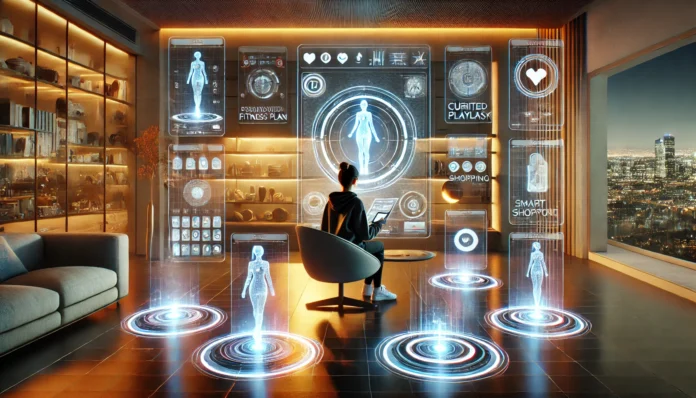In today’s digital era, personalization has become the cornerstone of user engagement, whether in shopping, healthcare, or entertainment. Hyper-personalized AI takes this concept to the next level, offering experiences so finely tuned to individual preferences that they often feel like they were custom-made. By leveraging advanced algorithms, machine learning, and data analysis, hyper-personalized AI is transforming how we interact with technology, making our lives more seamless and tailored than ever before.
What is Hyper-Personalized AI?
Unlike traditional personalization that groups users into broad categories, hyper-personalization uses AI to analyze granular data about individuals. It considers real-time behavior, preferences, location, and even emotions to deliver ultra-specific recommendations and interactions. This level of customization goes far beyond offering a recommended product or movie—it anticipates needs and adapts to users in real-time.
Applications of Hyper-Personalized AI
1. Retail and E-Commerce
Hyper-personalized AI revolutionizes shopping by curating unique experiences for every customer.
- Example: Amazon uses AI to analyze purchase history, browsing behavior, and search patterns to provide product recommendations that often feel spot-on.
- Virtual Try-Ons: AI systems like Vue.ai allow customers to visualize how clothes or accessories will look on them, enhancing online shopping experiences.
2. Entertainment and Media
Streaming platforms and social media thrive on hyper-personalization.
- Example: Netflix’s AI algorithms analyze viewing history, time of day, and even device usage to recommend shows and movies tailored to individual tastes.
- Spotify Wrapped: AI curates year-end summaries for users based on their listening habits, creating a deeply personalized reflection of their preferences.
3. Healthcare
AI tailors healthcare plans and interventions to individual patients, improving outcomes and enhancing care delivery.
- Example: HealthifyMe uses AI to create personalized fitness and diet plans based on user health data and goals.
- AI in precision medicine analyzes genetic data to recommend treatments uniquely suited to a patient’s biology.
4. Education
Personalized AI tutors adapt to a student’s learning pace, strengths, and weaknesses.
- Example: Platforms like Socratic by Google and Knewton offer hyper-personalized learning paths to help students grasp concepts more effectively.
5. Smart Homes and IoT
AI enhances home automation systems, learning user habits to adjust settings for comfort and efficiency.
- Example: Nest Thermostats adapt heating and cooling schedules based on user routines, preferences, and even local weather conditions.
Benefits of Hyper-Personalized AI
- Enhanced User Experience: Offers tailored recommendations and services that save time and improve satisfaction.
- Increased Efficiency: Anticipates user needs, reducing decision fatigue and simplifying daily tasks.
- Improved Outcomes: In healthcare and education, personalization leads to better results by addressing individual requirements.
Challenges and Ethical Considerations
While hyper-personalized AI offers immense benefits, it also raises critical concerns:
- Data Privacy: Collecting and analyzing extensive personal data may lead to privacy breaches or misuse.
- Bias in Algorithms: AI models may perpetuate biases, leading to unequal or unfair treatment of certain groups.
- Over-Personalization: Excessive tailoring can make experiences feel intrusive or limit exposure to diverse ideas and content.
The Future of Hyper-Personalized AI
As AI becomes more sophisticated, hyper-personalization will continue to evolve, potentially introducing:
- Emotionally Responsive AI: Systems that adapt in real-time to users’ emotional states, creating deeper and more empathetic interactions.
- Cross-Platform Integration: Unified AI ecosystems that seamlessly connect preferences across devices and platforms.
- Ethical AI Models: Development of transparent and fair algorithms to address biases and ensure equitable personalization.
Conclusion
Hyper-personalized AI is reshaping the digital landscape, bringing unparalleled convenience, relevance, and efficiency to our daily lives. While challenges remain, the potential for AI to create experiences that feel uniquely personal and valuable is boundless. As technology advances, hyper-personalization will undoubtedly play a pivotal role in shaping the future of human-technology interaction.





